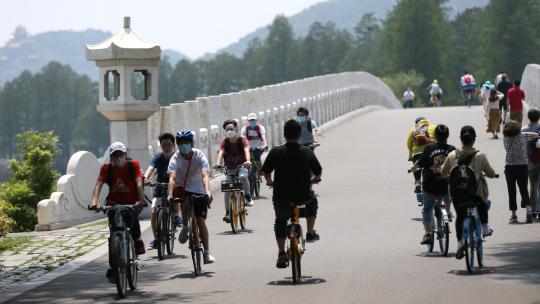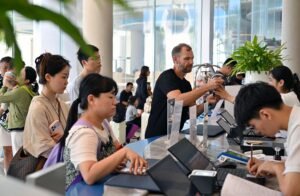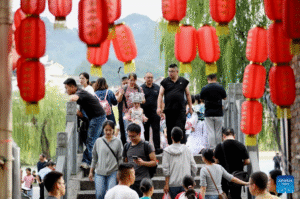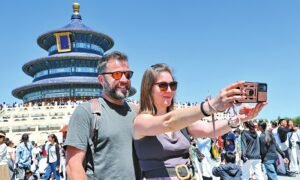China : Tourism revives over holiday, tourist attractions reopened in Hubei province

China Daily – The May Day holiday that ended on Tuesday ( May 5 ) produced strong signs of recovery for the tourism sector, which has been buffeted by the novel coronavirus outbreak.
The five-day holiday saw 115 million trips, resulting in 47.56 billion yuan ($6.74 billion) in revenue for travel operators, according to the Ministry of Culture and Tourism.
Though the results were still significantly below those of the same period last year, which saw 195 million trips during the four-day holiday, the market showed encouraging signs of recovery after travel restrictions were relaxed thanks to effective work in containing the coronavirus, officials said.
On Friday, the first day of the holiday, the surge began to take shape as attractions nationwide received a total of some 23.2 million visits generating 9.77 billion yuan in revenue for the day.
Officials at Lvmama, an online travel agency based in Shanghai, said the numbers showed that the desire to travel had increased-its reservations for tour packages were 150 percent higher than those placed for the Tomb Sweeping Day holiday last month.
Wang Xiaosong, Lvmama’s president, said enthusiasm for domestic travel emerged as the COVID-19 outbreak eased. Most reservations were for short trips because travelers are still making health and safety a priority, he said.
A Lvmama report said 30 percent of its users traveled in the area of their hometown and 40 percent went to the destinations within their province. Also, self-guided tours via automobile were popular because they involve less contact with others.
The cities with the highest numbers of travelers were Shanghai; Hangzhou, Zhejiang province; Suzhou, Jiangsu province; and Beijing. The capital’s residents were especially enthusiastic as Beijing lowered its emergency coronavirus response level as of Thursday from the top level to second level, relaxing some domestic travel restrictions.
Qunar, a travel agency in Beijing, said reservations for flights departing from Beijing surged fifteenfold in the half-hour following the capital’s announcement.
COVID-19 control and prevention remain the priority, officials said, though measures are being taken to revive tourism.
Hubei province tourism springing back to life
Similarly , twenty-two major tourist attractions that reopened in Hubei province, the hardest hit region by the COVID-19 contagion in China, had received 520,400 visitors from May 1 to 3, as people enjoy their first public holiday since the regional lockdown was lifted.
Although numbers were down significantly year-on-year, the tourism market is gradually recovering in the province as pandemic control measures are still in place.
According to the provincial culture and tourism bureau, the number of visitors received was down 83 percent year-on-year between May 1 -3, while tourism revenue plunged 94.5 percent to 30 million yuan ($4.2 million).
To avoid overcrowding and protect against risks of potential infection, the bureau earlier said that tourists should make bookings before visiting local scenic sites, and tourist flow should be limited to no more than 30 percent of the maximum capacity.
The province lowered its novel coronavirus emergency response level from the highest to the second-highest level on Saturday, with adjustments to prevention and control measures also instituted.
The province has had no new confirmed COVID-19 cases for 29 consecutive days since April 4, according to the provincial health commission.
To revitalize the province’s tourism sector, the provincial government established special funds of 100 million yuan to help tourism-sector enterprises influenced by the pandemic, said a notice issued on Friday.
Enterprises and government institutions are encouraged to give their employees a half-day extra vacation each Friday this summer to boost the tourism sector, the notice said.
Medical workers around the country who came to aid the province’s fight against the contagion can bring three family members to the province and enjoy free admission to any tourist attraction for the rest of their life, it added.
Han Street, a major shopping district in Wuhan, now has most of its shops open, but the number of visitors is still significantly lower than before the pandemic.
The district requires visitors to wear surgical masks, have their temperature checked and show a green health code before entry.
May 5 , 2020
Image : Cyclists and pedestrians traverse a bridge at East Lake in Wuhan, Hubei province, the hardest-hit region from the COVID-19 pandemic in China. Locals enjoyed their first public holiday since the months long regional lockdown was lifted. – Photo by Zhou Guoqiang / For China Daily














